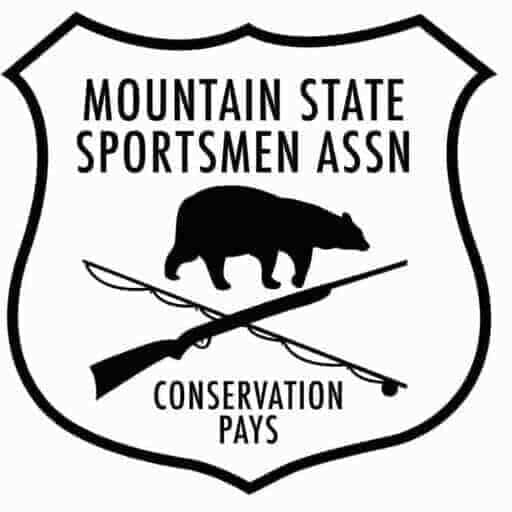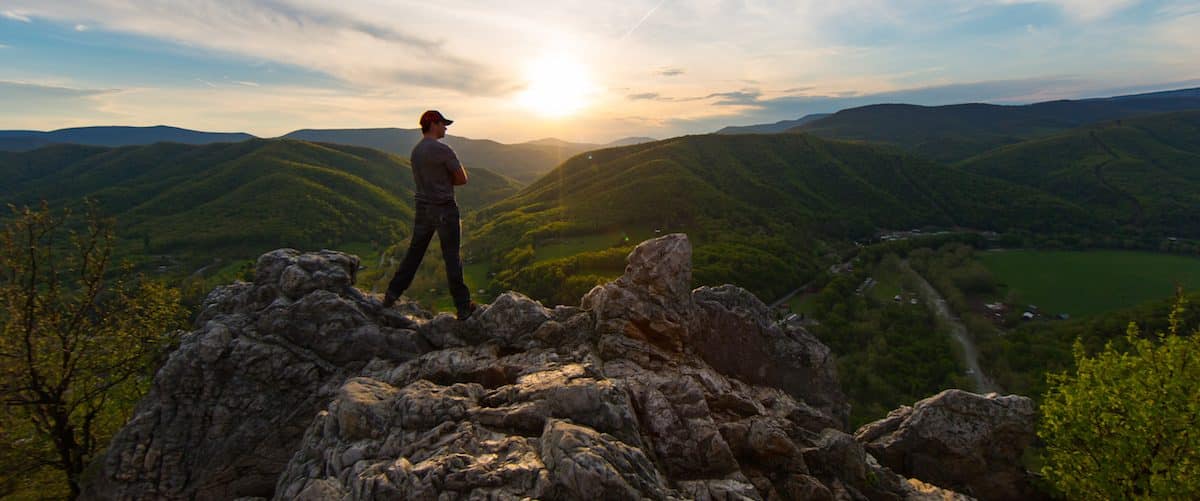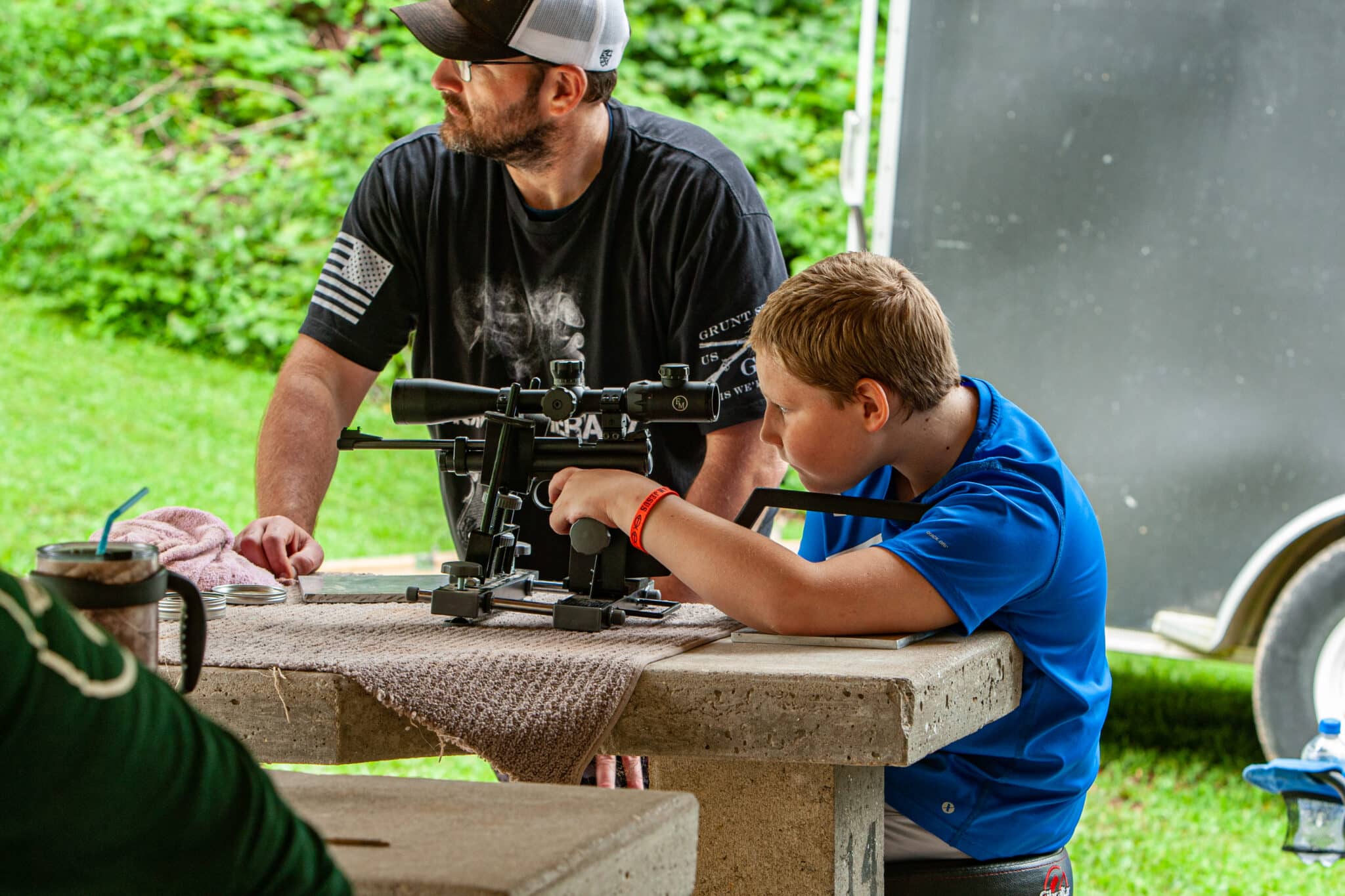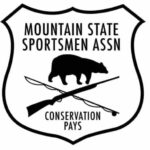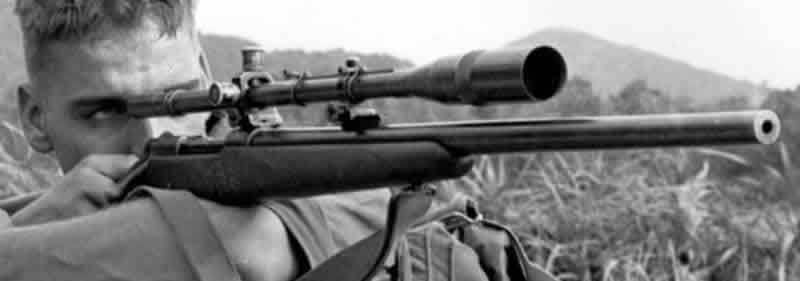Carlos Hathcock Method of Sighting in a Rifle
By AmSJ Staff
Sighting in a rifle is an important thing to do if you want your rifle to be dead on when taking a shot.
Which brings us to the Carlos Hathcock way of sighting in a rifle.
For those that don’t know who Carlos Hathcock is, he was a United States Marine Corps (USMC) sniper with a service record of 93 confirmed kills.
What type of rifle did Carlos Hathcock used?
Carlos used a Winchester Model 70 .30-06 match ammunition loaded with 173-grain boat-tailed bullets, also used an 8-power Unertl scope.
What many people don’t realize is that the Unertl scope back in the day doesn’t have glass amplification.
There also isn’t any internal adjustments to zero. The scope adjusts with turrets integral to the rear scope mount, and the tube of the scope floats inside adjustment pins.
The scope reticle does not have Mil Dots like the modern-day sniper scopes.
Mil Dots gives you accurate unit measurements to compensate for gravity and wind drift, this is like “Kentucky windage”.
So in other words using this Unertl requires lots of downrange practice. It is such an accomplishment of what he can do using what he had at the time.
Hathcock’s record and the extraordinary details of the missions he undertook made him a legend in the U.S. Marine Corps.
He was a serious threat to the NVA (North Vietnamese Army), which they placed a bounty of U.S. $30,000 on Hathcock’s head.
Carlos Hathcock Method of Sighting a Rifle
The following is a story by Gus Fisher a retired MGySgt USMC who talks of the time he met Carlos.
What was unique was the way Carlos had taught Gus to sight in a rifle. Here’s the excerpt from M14Forum:
As mentioned before, I was a very young Marine Sergeant when I came up to THE Marine Corps Rifle Team the first time as the junior Armorer.
I didn’t grow up using high power rifles. We used shotguns to hunt quail, rabbits, squirrels, pheasants, ducks and geese. I used a Mark I Ruger Target .22 pistol for racoon hunting and used a Model 74 Winchester .22 to really learn the basics of rifle marksmanship. My introduction to both high power shooting and long range shooting was in Marine Corps Boot Camp.
On Qual Day in Boot Camp, I ran 7 consecutive bullseye’s from the offhand position at 200 yards. The 8th round was a pinwheel bullseye, but it was on the target next to mine, so I got a maggie’s drawers. Knee High wind got me after that and I fell apart and only shot Sharpshooter in boot camp.
I bought a sporterized Mauser in .308 with a scope on it from a fellow Marine during the time I was going through the Armorer’s OJT program on Camp Pendleton. I used that for ground squirrel hunting, but was never really satisfied with my zero on the rifle.
So after I came up on “The Big Team,” I asked the second senior Armorer – Ted Hollabaugh, if he could show me how to REALLY sight in a rifle with a scope.
He said sure and he would do it, but since we had all the talent in the world at MTU, why didn’t I ask one of the shooters?
Well, I was a young kid and I didn’t know any of the shooters that well – most of them were much older than I. That’s when he suggested I ask Carlos Hathcock for some help.
I didn’t know Carlos then and did not know of his exploits in NM and Sniper shooting. Ted talked to Carlos about it and Carlos stopped by the shop later that afternoon.
Carlos looked at me and said, “So you want to sight in your rifle, eh? OK, thoroughly clean the bore and chamber. Dry the bore out with patches just before you come down to Range 4 tomorrow at noon on the 200 yard line. Have the sling on the rifle that you are going to use in hunting.” Then he went on about his business.
When I got to Range 4 the next day, he had a target in the air ready for me. He told me to get down in the best prone position I had. He checked me and adjusted my position just a bit. Then he said, “Before you shoot.
The MOST important thing I want you to do is take your time and make it the best shot possible. It doesn’t matter how long you take, just make it a good shot.
ALSO, and this is as important, make sure you give me an accurate call on where you think the bullet hit the target.” After I broke the shot, I told him where I thought the bullet had hit.
He checked it by using a spotting scope when the target came back up. He grinned just slightly and said, “not a bad call.” He then took a screwdriver and adjusted my scope a bit.
He had me record everything possible:
-about the shot and weather
– humidity
– temperature
– wind
– how I felt when the shot went off
– what kind of ammo I was using
– the date
– virtually everything about the conditions on the range that day.
I had never seen such a complete and precise recording of such things in a log book. He told me that if a fly had gone by the rifle and farted while I was shooting, to make sure I recorded that.
Then he told me to thoroughly clean the bore and chamber, and have it dry when I came back at 12 noon the next day. I was kind of surprised he only had me shoot once, but when you are getting free lessons – you don’t question or argue.
The next day, he told me the same thing. I called the shot and it was closer to the center of the bullseye. He made another slight adjustment and told me to clean the bore and chamber, dry the bore thoroughly and come back the next day at noon. Then we recorded everything possible about that day.
The following day, the shot was darn near exactly centered on the bullseye. Then he told me to clean and dry the bore before coming back the next day. Then we recorded everything about that day.
About a week into the process, Ted asked me how it was going. I said it was going really well, but we were only shooting one shot a day. Ted grinned and said, “How many shots do you think you are going to get at a deer? Don’t you think you had better make the first one count?” There was a level of knowledge and wisdom there that I immediately appreciated, though I came to appreciate it even more as time went on.
At Various Ranges
We continued this process with the sitting position at 200 yards, then prone and sitting at 300 yards and 400 yards. Then we went down to 100 yards and included offhand in the mix. Each day and each shot we recorded everything possible in the book and that included the sight settings for each position at each yard line. We also marked the scope adjustment settings with different color nail polish for each yard line.
When that was over after a few weeks, I thought I had a super good zero on the rifle. But no, not according to Carlos. He started calling me up on mornings it was foggy, rainy, windy, high or low humidity, etc., etc. and we fired a single shot and recorded the sight settings and everything else about the day. (I actually used four or five log books by the time we were through and put that info all into one ring binder.) I almost had an encyclopedia on that rifle. Grin.
Well, after a few months, we had shot a single round in most every kind of condition there was. Then about the 12th of December, it was REALLY cold and it seemed like an artic wind was blowing, there was about four inches of snow on the ground and freezing rain was falling. He called me up and told me to meet him at Range 4 at noon. I had gotten to know him well enough to joke, “Do you really want to watch me shoot in this kind of weather? He chuckled and said, “Well, are you ever going to hunt in this kind of weather?” I sighed and said, “See you at noon.”
By the next spring, I had records for sight settings for the first shot out of a “cold” barrel for almost any weather, position and range I would use and temperature/wind/humidity condition imagineable.
He had informed me months before that was basically how he wanted all Marine Snipers to sight in their rifles as only the first shot counts, though of course they would do it out to 700 yards on a walking target and further on a stationary target. They also practiced follow up shots, of course and we did some of that as well. It gave me great confidence that I could dial in my scope for anything I would come across.
Some years later in the late 90’s or really early this century, I was talking to a Police Sniper and he was really impressed I knew Carlos. I told him about the way Carlos had me sight in my rifle and suggested he do the same thing as he was a sniper for the Henrico Country SWAT team. He had never heard of that and took it to heart. About two and a half years later, he got called to a domestic situation where a husband had a handgun to his wife’s head and was going to kill her. After the Sergeant in charge and the Pysch guy determined the husband was really going to do it, the Police Officer was asked if he could hit the guy at just over 200 yards and not hit the wife. He said he knew he could (because he had followed Carlos method), so they told him to take the shot. One shot and the perp’s head exploded.
The wife was scared crapless, but unharmed.
When he told me about it about when I saw him the first time a week after the incident, the first thing I asked him if he was OK about taking the shot. He understood I was talking about the psychological aspects and he really appreciated it. He said, it had bothered him a little that night until he remembered that if he had not taken the shot, the wife would have died. I checked back with him and he really was OK with having taken the shot. I’ve checked back every gun show I see him at and I know he is doing fine about it.
